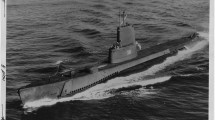Abstract
In 2022 and 2023, the Defense POW/MIA Accounting Agency (DPAA) partnered with Marine Imaging Technologies to conduct remote sensing survey operations in Guam to search for and possibly confirm the locations of four separate B-29 Superfortress wreck sites. The reported locations for these sites are in challenging environments; high seas, fast currents, and strong winds pose hazardous conditions for survey teams and equipment. Additionally, the bathymetry of the areas consists of dynamic changes in depths with sudden valleys, rises, and seamounts, mirroring the rocky coastline which poses threats to successful, strategic surveying and quality results. Marine Imaging Technologies worked with Eastern Search and Survey to develop an innovative survey system that allowed flexibility and pliability for small boat, deeper water, and limited crew operations. This paper discusses the goals, challenges, and results of this project and looks at ways forward on similar missions partnering with DPAA to account for MIA service members.










Similar content being viewed by others
Notes
For this website, please see: http://tinyurl.com/ye2492d9.
References
Abbey D, Lickliter-Mundon M, Scannon PJ (2023) Project Recover: Aviation archaeology for MIA repatriation. Strides towards standard methodologies in aeronautical archaeology, 75–106
Bowers PM (1999) Boeing B-29 superfortress. First Edition. Warbird Tech Vol. 14. Specialty Press, Shrewsbury
David CK, Smith P, McKinnon J (2020) The journey home: recovering self and those who gave all. J Commun Archaeol Herit 7(4):234–238. https://doi.org/10.1080/20518196.2020.1766171
Defense POW/MIA Accounting Agency (2024) https://www.dpaa.mil. Accessed 29 Jan 2024
Hartmeyer PA, Weirich J, Van Tilburg H, Copeland A, Malik M, Cantelas F, Cuellar S, Suhre K, Cantwell K (2024) Community-driven marine archaeology: NOAA ocean exploration operations in the Pacific Basin 2024–2026. Int J Naut Archaeol. https://doi.org/10.1080/10572414.2023.2295466
Jeffery B, Applegate Palmer K (2017) The need for a multivocal approach to researching and managing Guam’s World War II underwater cultural heritage. Int J Naut Archaeol 46(1):164–178. https://doi.org/10.1111/1095-9270.12206
Jeffery B, Moran V (2007) Report on the development of Guam’s submerged and maritime archaeology sites databases. Unpublished report for Guam Historic Preservation Office, Hagåtña
Joose T (2022) A somber search: can floating DNA help recover troops lost long ago at sea? Science 377(6610):1032–1035
Lawson AJ (2023) The impacts of site formation processes on excavation methodology: The study of a World War II B-24 crash site in Munster, Germany. Master of Arts Thesis, Graduate College at the University of Nebraska-Lincoln
O’Leary OL (2014) A model for recovery: predicting the location of human remains on WWII bombardment and cargo aircraft crash sites. University of Glasgow, Glasgow
Pietruszka AT (2015) Forensic archaeology underwater: JPAC’s inventory, investigation and recovery of US casualties of war from submerged sites. In: Mike Groen WJ, Márquez-Grant N, Janaway RC (eds) Forensic archaeology, p 453–461
Vergun D (2019) Battle of Guam: From defeat to victory. The Daily Defense News. https://www.soest.hawaii.edu/pibhmc/cms/data-by-location/cnmi-guam/guam-island/geomorphology/. Accessed 2024
Acknowledgements
The authors would like to thank all the historians and archaeologists of the Indo-Pacific Directorate of DPAA, the Joint Region Marianas, the Naval Facilities Engineering Systems Command Marianas, the Andersen Air Force Base, and the Mariana Islands Range Complex, who provided the essential information to make these projects happen. We would also like to thank Captain Barnaby Acfalle and his crew on Liquid Soul; David Ullman, Nick Balfour, and Ben Roberts; Jessical Irwin from HJF; and special thanks to Mr. Jim Pinson, owner of GMI Wholesale for logistics, lodging, and diving support.
Author information
Authors and Affiliations
Contributions
All authors wrote, reviewed, and edited manuscript.
Corresponding author
Ethics declarations
Conflict of interest
The authors declare no competing interests.
Additional information
Publisher's Note
Springer Nature remains neutral with regard to jurisdictional claims in published maps and institutional affiliations.
Rights and permissions
Springer Nature or its licensor (e.g. a society or other partner) holds exclusive rights to this article under a publishing agreement with the author(s) or other rightsholder(s); author self-archiving of the accepted manuscript version of this article is solely governed by the terms of such publishing agreement and applicable law.
About this article
Cite this article
Mires, C., Kovacs, E., Lickliter-Mundon, M. et al. In Tough Seas: Overcoming Field Challenges Through Innovation and Partnerships With DPAA. J Mari Arch (2024). https://doi.org/10.1007/s11457-024-09396-5
Accepted:
Published:
DOI: https://doi.org/10.1007/s11457-024-09396-5




